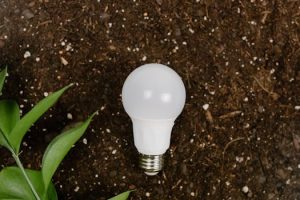Biodegradable Circuit Boards: Tackling E-Waste with Green Tech
As our world becomes increasingly dependent on technology, the issue of electronic waste (e-waste) has grown to alarming proportions. With millions of tons of discarded electronic devices piling up in landfills each year, the environment and human health are at risk from the toxic substances contained within these products. In response to this growing problem, innovative solutions are being developed, such as biodegradable circuit boards, to help tackle e-waste and promote a greener approach to technology. In this article, we will explore the concept of biodegradable circuit boards and how they can make a positive impact in the fight against e-waste.
What are Biodegradable Circuit Boards?
Biodegradable circuit boards are electronic printed circuit boards (PCBs) that are made from organic and biodegradable materials, such as plant fibers and resins. Traditional PCBs are made from non-biodegradable materials, such as fiberglass and epoxy resins, which can take hundreds of years to decompose. On the other hand, biodegradable PCBs are designed to naturally break down at the end of their life cycle, reducing the environmental impact of e-waste.
The Environmental Impact of E-Waste
The production of electronic devices, as well as the disposal of these devices, has a significant impact on the environment. Many electronic devices contain toxic substances, such as lead, mercury, and cadmium, which can leach into the soil and water when not disposed of properly. This can harm both plant and animal life, and eventually, human health. E-waste also has a large carbon footprint, as the production of new electronic devices requires large amounts of energy and resources.
The Need for Green Tech Solutions
Green tech refers to the development and use of environmentally friendly technology. It is becoming increasingly important in industries such as electronics, where the demand for more sustainable solutions is growing. Biodegradable circuit boards are just one example of green tech in action, as they aim to reduce the environmental impact of electronic devices.
How Biodegradable Circuit Boards Work
Biodegradable circuit boards are made using natural and renewable materials, such as bamboo, hemp, and biodegradable resins. These materials are layered and pressed together, forming a strong and durable PCB. While traditional PCBs require the use of chemical etching to create the circuit paths, biodegradable PCBs use an environmentally friendly etching process using UV light. This further minimizes the environmental impact of the production process.
Biodegradability and End-of-Life Disposal
One of the key benefits of biodegradable circuit boards is their ability to naturally break down at the end of their life cycle. This means that when a device containing a biodegradable PCB is disposed of, the board will decompose into non-toxic materials that can safely return to the environment. This is in stark contrast to traditional PCBs, which can sit in landfills for hundreds of years, polluting the environment.
The Future of Biodegradable Circuit Boards
While biodegradable circuit boards are still in the early stages of development, there is much potential for this technology to make a positive impact in the electronics industry. As environmental concerns continue to grow, the demand for more sustainable solutions, such as biodegradable PCBs, is also increasing. With further research and development, we can expect to see more widespread adoption of biodegradable circuit boards in the near future.
Challenges and Roadblocks
Despite the potential benefits and advancements in biodegradable circuit board technology, there are still some challenges and roadblocks that need to be addressed. One of the main challenges is ensuring the reliability and performance of these boards. As electronic devices become more complex and demand higher performance, it is important that biodegradable circuit boards can meet these requirements without compromising on their environmental impact.
In Conclusion
The issue of e-waste is one that requires urgent attention and innovative solutions. Biodegradable circuit boards represent a promising solution that can help reduce the environmental impact of electronic devices and promote a more sustainable future. As this technology continues to develop and gain traction in the industry, we can look forward to a greener approach to technology and a healthier planet for future generations.








